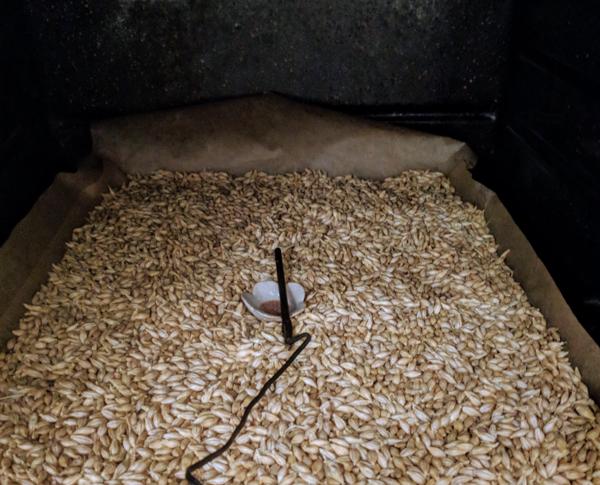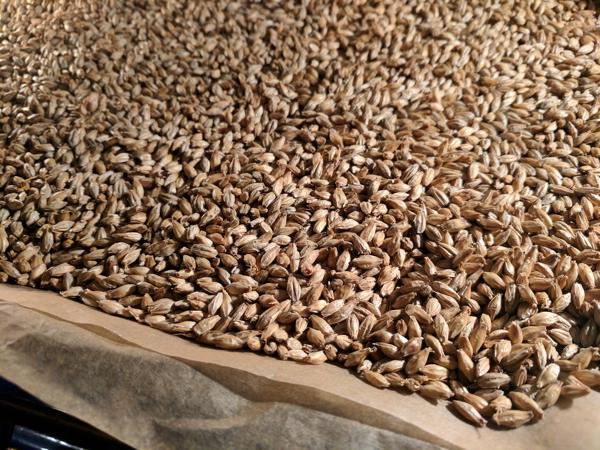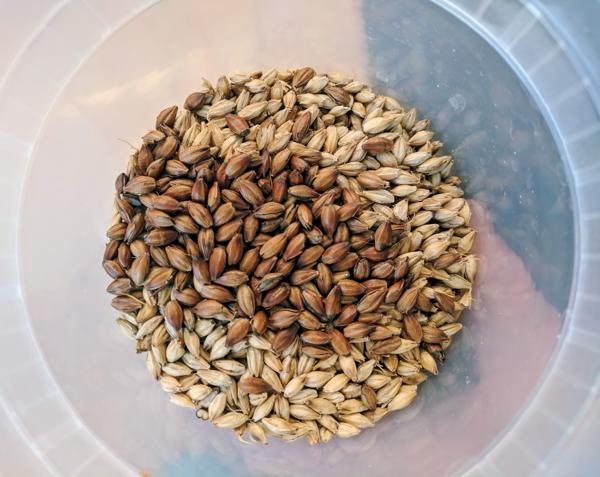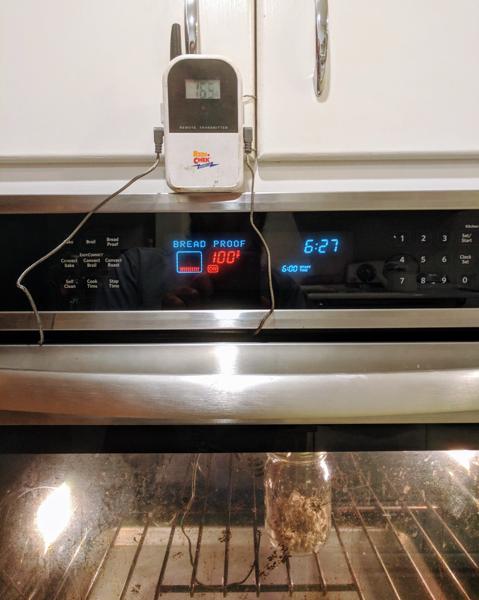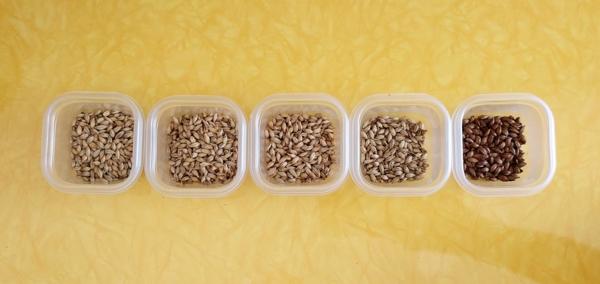Malting Experiments
A second round of basic home malting experiments, to transform modified/germinated barley into various specialty malts through different combinations of temperature, time, and moisture:
A round of basic home malting experiments to transform previously modified/germinated barley into various specialty malts through different combinations of temperature, time, and moisture.
I tried both a gas and an electric convection oven, and decided to use a remote temperature probe (oven temperatures were only accurate to +- 25 degrees or worse) combined with the manual temperature control of raising and lowering the nominal oven thermostat (or opening and closing the door) every half hour or so.
- Pale: 180-190F for 3-4 hours
- ‘A Darker Shade of Pale’: 220F for 3 hours– a nice flavor without much visible color change. An attempt at a Munich-style malt, but I read later that Munich Malt traditionally involves a very gradual increase of temperature over a longer time to develop a different flavor.
- ‘Amber Malt’: 250F for 2 hours– a nice barley flavor with a little flair.
- ‘Light Biscuit Malt’: 220F for 3 hours + 320F for 45 minutes, it took on just a slight hint of color beyond the pale malt and had a nice light toasted-bread flavor.
- ‘Light Chocolate Malt’: 190F for 3.5 hours + 400F for 60 minutes (it browned unevenly, burning where in contact with the tray– at these higher temperatures I need to stir it more frequently)
- ‘Chocolate Malt’ : 190F for 3.5 hours + 440F for 30 minutes with regular stirring (produced a nice dark-brown grain with a not-too-bitter roasted coffee flavor)
- Crystal: Fundamentally different than the malts above, Crystal involves “mashing in the kernel”– holding it moist at a temperature that allows enzymes to break starches into simpler sugars (much as you do during brewing), then raising the temperature to dry it and caramelize these sugars, producing some lingering human-perceivable sweetness that yeast can’t easily convert to alcohol.
- I put still-moist germinated malt (never arrested/halted by drying) in a jar in the oven at about 160 for two hours, raised it to 250 for two hours, and raised it to 350F for another 15 minutes with rapid stirring. It developed a promising level of sweetness and color, but didn’t toast uniformly so had some bitterness. Some regular stirring during the 250F phase was probably needed.
